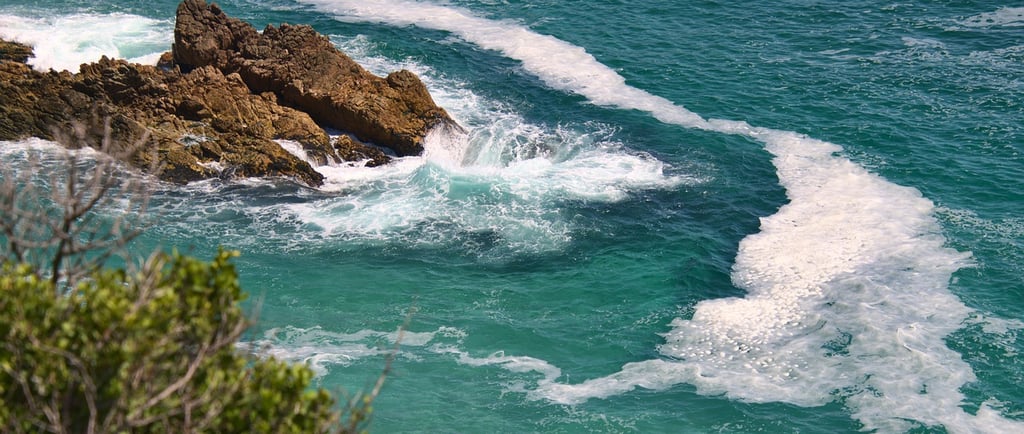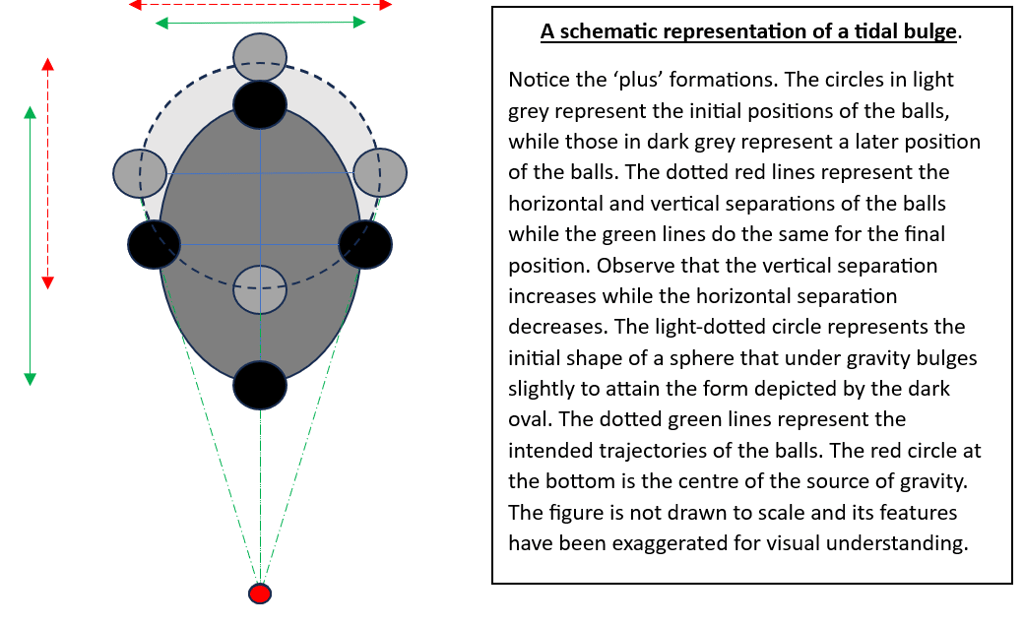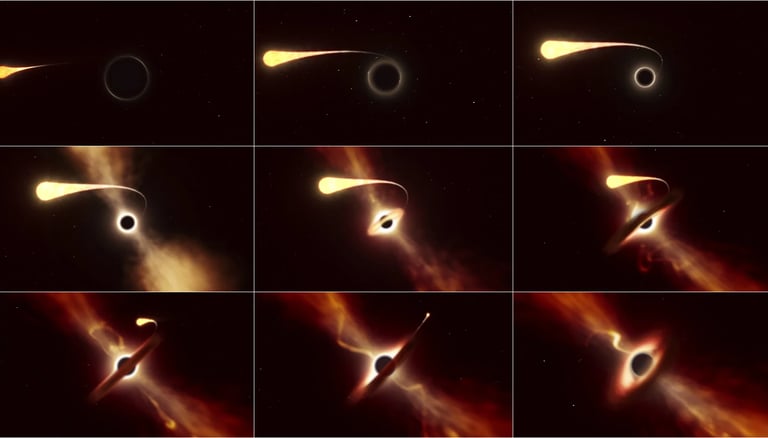Ocean Tides: Unveiling the Universal Forces Shaping the Seas
Ocean tides are a mesmerising dance, choreographed by the gravitational pull of celestial bodies and the intricate mechanics of our planet. As the moon and sun exert their influence, they create a rhythmic ebb and flow that shapes coastlines, supports marine ecosystems, and drives coastal navigation. This phenomenon reveals a deeper connection to the universal laws of physics, showcasing how these forces interact on a grand scale. By exploring the hidden mechanics behind tides, we uncover a fascinating story of nature's power and the interconnectedness of our world.
ASTRONAUTICA


Nature's Symphony: The Dance of Ocean Tides Shaped by Celestial Forces.
If you have ever been to a seabeach and observed the waves hit the shore incessantly, you must have noticed that the waves tend to come farther into the shore at certain times of the day than at others. You have probably been told that these rises and falls of the sea level are called tides which are caused by the combined gravitational effects of primarily the Moon and to a lesser extent the Sun. Seems fair! The Moon’s gravitational pull on the Earth causes the water in the oceans to rise slightly towards the Moon where the Moon is overhead and subsequently drain out water from the other regions, right? Have you ever wondered what the tidal effects are on the landmasses? What if the notion of water rising and falling is not the most accurate explanation of whatever is truly going on?
There is an age-old saying, “Time and tides wait for none.” But, tides, the bulges in the oceans, stay where they are while we move in and out of it, in some sense. Tides are an after-effect of gravity; where there is a gravitational field, there are tides. To get a better sense of tidal effects, think of four balls freely falling under a gravitational field, say that of Earth, in a ‘plus’ formation. We know from Newtonian gravity that objects falling on Earth follow a linear trajectory (neglecting winds, of course!) that leads to the centre of the Earth. (If not for internal pressure, everything we see around us should end up at the centre… kind of!) The ball further away from the Earth (on the top of the ‘plus’) is pulled slightly less strongly than the one closer to the Earth (at the bottom of the ‘plus’). So, what we see is the ball at the bottom accelerating towards the ground slightly more than the one at the top. What happens to two objects that have relative acceleration away from each other along the line joining them? They separate farther. Besides, the two balls at the same horizontal level are subject to equal magnitudes of pull in the direction of Earth’s centre. This last bit is rather crucial. Since the Earth is (approximately) spherical, the balls mutually close in an ever-so-tiny bit as they fall. It may be helpful to imagine two lines going to the centre of the Earth; as one moves down, the distance between the lines decreases, and hence the two balls appear to move towards each other.
How does this help in our understanding of bulges? Well, the initial plus formation appears now to be stretched vertically and compressed horizontally. The same thing happens to an Earth-like spherical object floating in space: The sphere becomes oblong in the direction of the gravitational pull. Remember that you need a strong gravitational field (like in the neighbourhoods of black holes) to distort the sphere significantly. The Moon’s gravity hardly does much to the Earth’s shape. The elongation is noticeable only in the oceans, for the land masses are too rigid to allow any noticeable change. The solid portion of the Earth rotates under this bulge of water, thus creating the illusion of rising and falling water levels. Of course, the non-uniform land-water distribution on the Earth’s surface implies that our observations are not as straightforward to explain, but this is what roughly goes on. (You may have heard of irregular tidal cycles like diurnal, semidiurnal, and mixed semidiurnal tides 1. The Coriolis force also causes regional tidal variations.)
Convinced? Not so soon! Why don’t lakes or ponds have tides, then? It does come down to scales: Tides happen in every puny amount of liquid, including the coffee you might be drinking right now, but that is microscopic. The ocean tides, however, are more a result of squeezing than stretching. See, the Moon’s gravitational gradient on the Earth is several orders of magnitude lower than the Earth’s own gravity. Now, have a look at the diagram. Imagine you are standing at the centre of the Earth. If you look along the line joining the centres of the Earth and the Moon, the tidal accelerations would seem to stretch the Earth. But, if you looked in the perpendicular directions, the tidal accelerations would point inward, towards you. In between, the tidal acceleration vectors would be at an angle. This is the key: Ocean water is directed along these vectors. This effect accumulates over the vast scales of the oceans as we move towards the point where the tidal acceleration is outward, to give a noticeable tidal bulge. This accumulation is not enough to produce something noticeable in smaller water bodies, such as lakes or pools. It’s for the same reasons that it is easier to pop bigger pimples than smaller ones! Some large lakes may indeed have tides about a few centimetres high, however, the effect of surface winds or the speed boat you took on one of your earlier vacations does more than enough to dilute this effect beyond perceivability.
You might now ask why tides are higher during full moons and new moons and lower during the first and last quarters. Recall how tides on Earth are influenced primarily by the combined gravitational effects of the Moon and the Sun. When the Sun, the Earth, and the Moon align in a syzygy (conjunction or opposition) 2, the tidal effects of the Moon and the Sun add up perfectly to give rise to the greatest tides (high tides). However, when they are at right angles to the Earth their combined tidal effect is less pronounced, much like the vector sum of two perpendicular vectors (neap tides). There is, then, no room for a larger-looking moon on a full-moon night to exert a greater gravitational pull on the Earth; the Moon always induces the same tidal effect in magnitude. The intensity of tides on Earth is merely due to the relative positions of the Moon and the Sun.
But, shouldn’t the rotation of the Earth have any effect on the course of events? As the Earth rotates, the peak of the bulge moves away from the line joining the Earth and the Moon, much to the anguish of the latter. As in any stable equilibrium, the Moon tries to restore the position of the bulge, thereby hindering the rotation of our planet. In fact, the Earth’s rotation has slowed by 47 thousandths of a second per day in the past 3,200 years. It’s not just the Moon slowing down its planet though, the Earth has more than returned the favour. The Earth too causes a bulge on the Moon and the torque applied by Earth’s gravity on this bulge has over geological time scales tidally locked the Moon to the Earth. This means the Moon’s synodic day is the same length as its synodic period 3. Also, this means we always see the same side of the Moon, while the other side is forever out of our sight, ergo the ‘dark side of the Moon’.
It should now be tempting to think about what happens when tidal effects go to an extreme. To find out, we might have to travel about 3000 light-years to V616 Monocerotis, the closest known black hole to Earth. When gravitational fields are this extreme, something bizarre begins to happen. Any object in the vicinity of such a strong gravitational source is greatly deformed as the gravitational gradient is very steep. Remember the plus formation we discussed earlier? Now, the balls at the vertical position are subject to significantly different gravitational pulls, the ball closer to the source of gravity being pulled so much more strongly than the one farther away. Any object here would be stretched by mind-blowing proportions. This type of deformation is referred to as spaghettification 4, what a cool name! So, if you were to fall into a black hole, feet first, your body would snap around your hip first, before you turn into four pieces, then eight and so on until you eventually became a stream of particles swirling around the black hole at relativistic speeds, possibly to eventually enter the event horizon after which your particles would head towards an inevitable end at the apparent singularity at the centre of the black hole to be lost from the rest of the universe forever. What a tragic end, indeed! There’s good news though, if you manage to pull out rapid cartwheels during your epic freefall, you might survive a little longer as the gravitational pull wouldn’t be concentrated at a specific part of your body. Unfortunately, though, we wouldn’t be able to observe you execute these incredible stunts as you would be red-shifted beyond sight, not to mention that the intense gravity would slow your time so much that you would seem to take forever to reach the black hole. But that is a subject for another day.
On Earth, we thankfully don’t have to deal with such hostile gravitational fields. The Moon’s gravity is for most practical purposes negligible on the surface of the Earth. Otherwise, the Olympic record for the high jump might have had to pass a permittable relative position of the Moon. Also, this means that the Moon is not responsible for the lunatic behaviour of certain individuals on full-moon nights. The tidal effects of the Moon’s pull on your brain are too small to cause any behavioural change; perhaps, if anything can, it could be which side of the pillow you slept on the last time.
1* A syzygy is a roughly straight-line configuration of 3 or more celestial bodies in a gravitational system. A common example is the alignment of the Sun, the Earth, and the Moon during eclipses.
A conjunction occurs when two celestial bodies are aligned such that they appear to be in the same place in the sky when observed from the Earth.
An opposition occurs when two celestial bodies appear at opposite points in the sky when observed from the Earth. This usually happens when a planet (or an asteroid or a comet) is opposite the Sun and the Earth is in between them. This is a good time to observe the object as it is at its nearest point to the Earth and well-illuminated by the Sun.
2* The synodic period is the interval between successive occurrences of a specific phase of an astronomical object, typically a planet or a moon, as observed from a reference point such as the Earth. The sidereal period is the interval between the same occurrences as observed relative to fixed stars. A sidereal day on the Earth is about 23 hours, 56 minutes, and 4 seconds long.
3* Diurnal tides are characterised by a single high tide and a single low tide per day. These tides typically occur in regions where the tidal range is relatively small.
Semi-diurnal tides are characterised by two high tides and two low tides per day, with relatively equal heights. Occurring in most coastal regions, this is the most common tidal pattern.
Mixed semi-diurnal tides are characterised by two high tides and two low tides per day, but with unequal heights. These tides occur in coastal areas where the tidal range varies significantly throughout a tidal cycle.
4* Spaghettification is a term used to describe the extreme tidal forces experienced by an object as it approaches a black hole. As the object gets closer to the black hole, the tidal forces become so strong that they can overwhelm the object's internal gravitational forces, causing it to be stretched and elongated in a process likened to the stretching of spaghetti.




A low tide has hit the shore!


Extreme tidal forces in the vicinity of a black hole can rip apart a falling star: Spaghettification!
Courtesy: theweathernetwork.com
Test your understanding with a short quiz!
